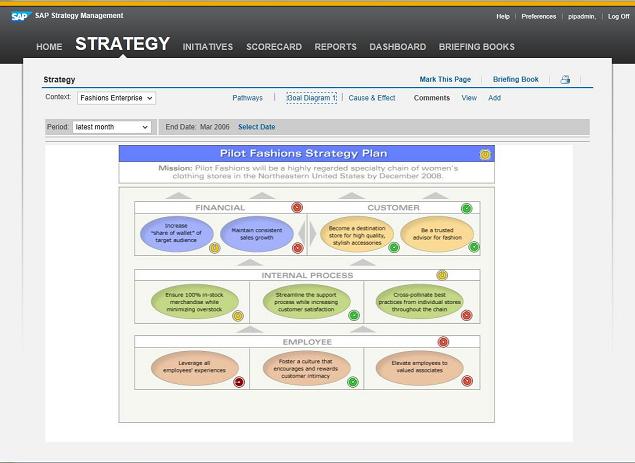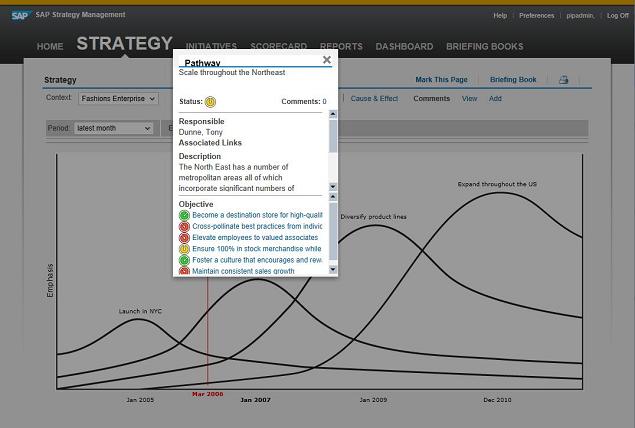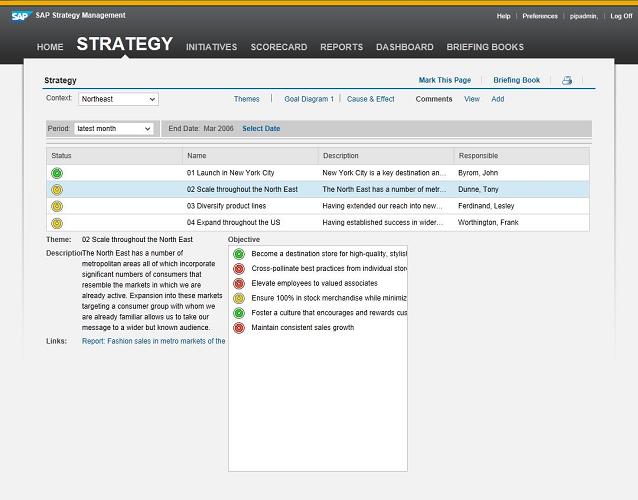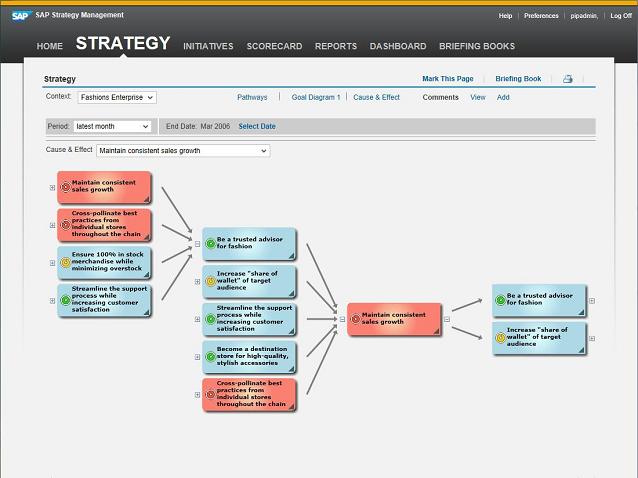Too often strategy remains locked away in stand alone documentation, remote from the day to day world. Alignment within the organisation towards these goals is handicapped through lack of communication because there is no easy way for a consistent view to be made available beyond a small group. A strategy map acts as the GPS for your organisation showing the route to the achievement of your Objectives and your position on that journey. SAP Strategy Management brings this process alive providing an interactive location for users to not only remind and educate themselves about strategy but also to view progress at a glance. Available at every level within the system, this means that the view of strategy is always available and can be tailored to reflect the contribution that that part of the organisation is tasked to provide.
SAP Strategy Management’s strategy tab consists of interactive Strategy Maps, Pathways (or Themes) and Cause-and-Effect modules that serve as organisational memory behind the goal development process, deliver a unified view of the strategic plan, and provide a collaborative environment for discussing and updating goals. A single click presents a concise view of that object providing a direct route to explore further.




Key features and benefits
- Industry-first implementation of pathways: Depicts the progressive stages in realising your organisation’s long-term vision; provides an understanding of the phases in which particular objectives play primary roles. Answers the question: “How do I communicate the various time horizons different stakeholders must consider and highlight the changing priorities as strategy evolves?”
- Both system-generated and user-imported strategy maps: Easily create one-page summaries of the strategic plan within SAP Strategy Management or import existing graphics into the system and make these familiar images interactive. Allows you to easily create and update strategy maps to fit the requirements of your organisation. Communicate not only the corporate view of strategy but also a view directly focused on that area of the organisation.
- Cross-cutting view of related Objectives: Themes recast Objectives to provide a cross-cutting view across the Perspectives so enabling a golden thread to be established. Score your performance in relation to that Theme. Visualise the relationships and drill into the individual Objectives within the Theme to focus on the issues.
- Cause-and effect visualisations: Better understand how a mission can be achieved by illustrating which objectives play primary, secondary, or tertiary roles in meeting other objectives (cause) and which other objectives will be affected by a specific objective (effect).
- Integrated, but available stand-alone: Publishing the strategy even before KPIs have been defined or operational systems integrated helps motivate the workforce and lay the foundation for successful adoption. Feedback from the field can be communicated directly to the strategy development team so that goals can be refined based on real customer feedback. Organisations can then use the system to collaborate on KPI definition.
Tel: +44 (0)870 166 2435, Fax: +44 (0)870 054 8795, Email: info@issel.co.uk
© 1996-2017 ISSEL Intranet Software Solutions (Europe) Ltd. All rights reserved
